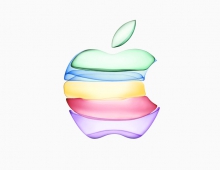
Google Glass and Hololens Assisted Reality Wearables Are trying to Transform Hands-on Work
Alphabet, Microsoft and some startups, are bringing their so-called wearables back as part of a push to make warehouses and manufacturing more efficient with the help of technology.
These companies are trying to bring Assisted Reality to wearable technology in general, making the technology able to understand a user’s specific needs and layer in relevant information. Then, workers could apply this insight — whether aided by a particular tool, a diagram, or a procedure — to improve the efficiency and effectiveness of their work.
For workers and professionals in fields such as manufacturing, logistics, field services, and healthcare where there is often a need to reference lots of content that they might otherwise forget, Assisted Reality could provide real and appreciable returns on investment.
Google Glass, a computerized eyewear launched six years ago and was one of Silicon Valley's more spectacular flops. But deemed too awkward and pretentious, early users were disparaged as "glassholes" by a critical public. Parent company Alphabet Inc. quickly retired the product.
Google has now relaunched its glasses for commercial use. The new $999 Glass Enterprise Edition 2 is built on the Qualcomm Snapdragon XR1 platform, which features a more powerful multicore CPU and a new artificial intelligence engine. This enables power savings, performance and support for computer vision and advanced machine learning capabilities. Gogole has also also partnered with Smith Optics to make Glass-compatible safety frames for different types of demanding work environments, like manufacturing floors and maintenance facilities.
Additionally, Glass Enterprise Edition 2 features improved camera performance and quality, which builds on Glass’s existing first person video streaming and collaboration features. Google has also added USB-C port that supports faster charging, and increased overall battery life.

Finally, Glass Enterprise Edition 2 is easier to develop for and deploy. It’s built on Android, making it easier for customers to integrate the services and APIs (application programming interfaces) they already use. And in order to support scaled deployments, Glass Enterprise Edition 2 now supports Android Enterprise Mobile Device Management.
Google's new Glass customers include DHL’s supply chain unit, Sutter Health, and farm-equipment maker AGCO Corp.
Microsoft's $3,500 HoloLens has been adopted by Lockheed Martin for manufacturing spacecraft. Technicians can use images projected onto the lenses to mark the locations for fasteners to be attached to a curved panel. When the technician or the panel moves, the computer adjusts.
Finnish telecom company UROS Group has bought 10,000 hands-free devices made by startup Realwear. Shell has also decided to deploy thousands of the $2,000 Realwear devices in its sites worldwide. The gadget resembles a rugged phone headset to be worn around the neck or clipped to a hardhat. A small screen can swivel in front of one eye, projecting an image comparable to a 7-inch screen.
Vuzix also sells the Blade, a pair of glasses with a floating screen on one of the lenses.
In the future, the technology could become compact and powerful enough to replace smart phones as the indispensable piece of personal technology. However, there's still a ways to go before that happens. Current devices are still cumbersome and lack the ability to be “truly immersive,” which limits their usefulness.





















